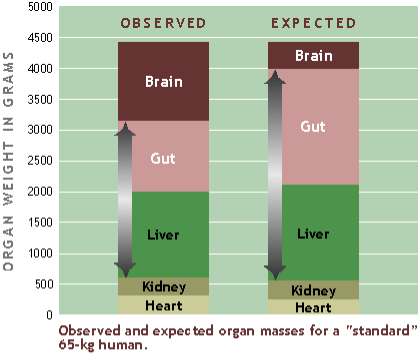Did a High-Quality Diet Lead to Bigger Brains?
A large brain is one of the most distinct features of modern humans (Homo sapiens). It may seem surprising that other animals have not evolved similarly large brains for their adaptive advantages, but the Expensive Tissue Hypothesis offers a possible explanation. Big brains require a lot of energy, but energy is also needed by the body’s other systems. This extra energy may have come from the digestive system, since humans have smaller guts relative to brain size than other primates. This means that when brain size increased, there was a corresponding decrease in the size of the gut to compensate. This change could have only occurred with the gut because other organs can’t be reduced and still function.
While a big brain is useful, changes in the gut require adaptive behaviors to compensate. Early hominins like Homo erectus would have needed high-quality foods to compensate for worse digestion. Fortunately for human evolution, changes in the East African climate two million years ago resulted in a favorable environment with more access to protein. An abundance of resources could have a feedback effect, continuing to increase brain growth at the expense of gut size.
The gastrointestinal tract of a modern human is complex, but ancient hominins may have had even larger organs.

This graph shows the differences between organ sizes of a typical human and the sizes that would be expected based on other non-human primates. The liver, kidney, and heart sizes are equal, but the brain and gut are dramatically different from what would be expected.
By Emily Conway (’22)

